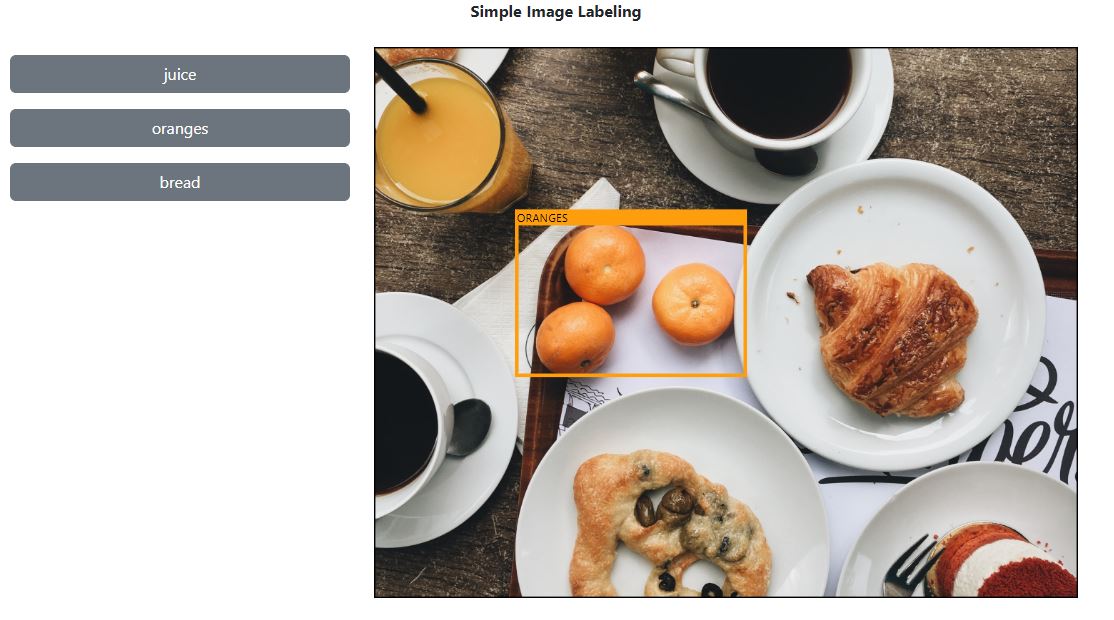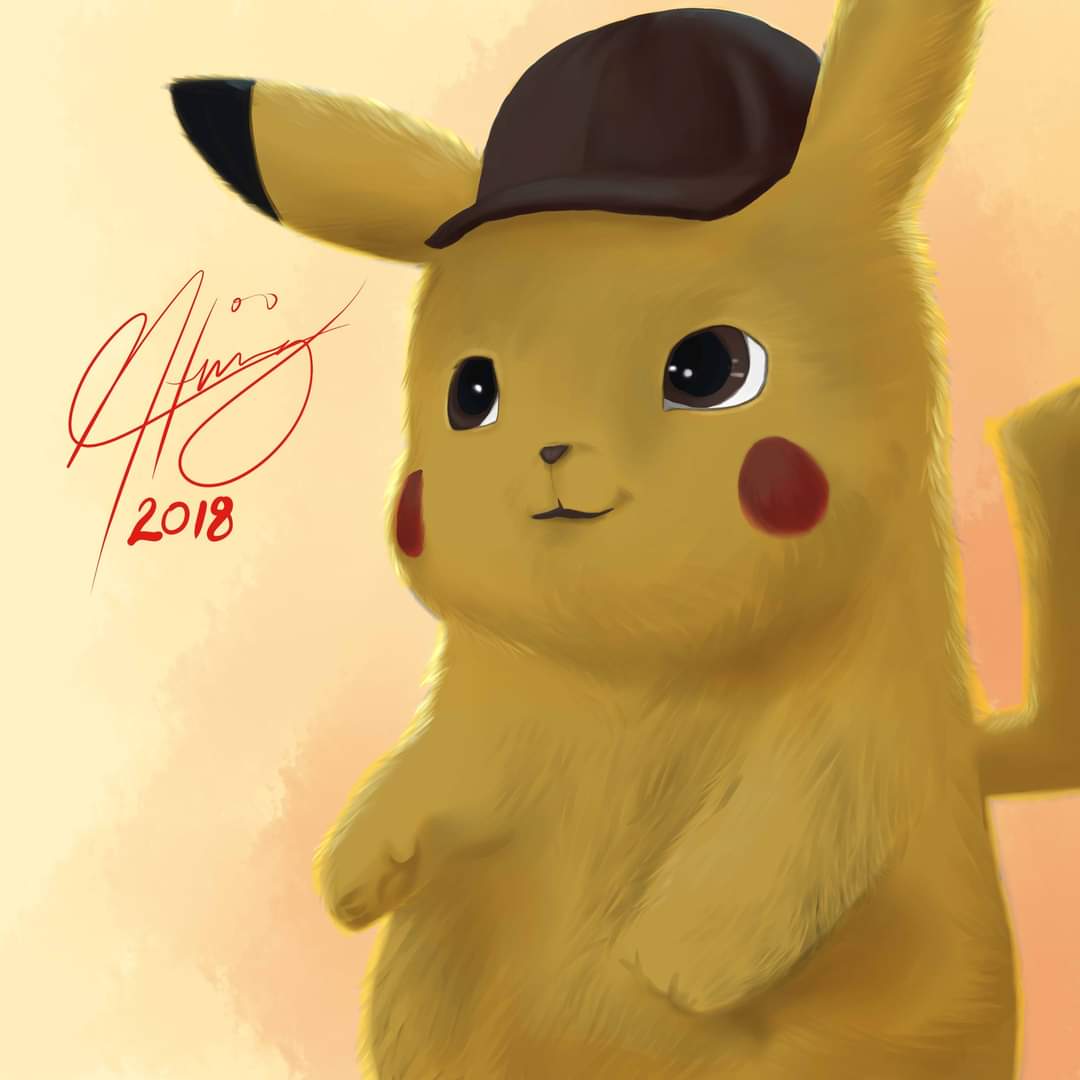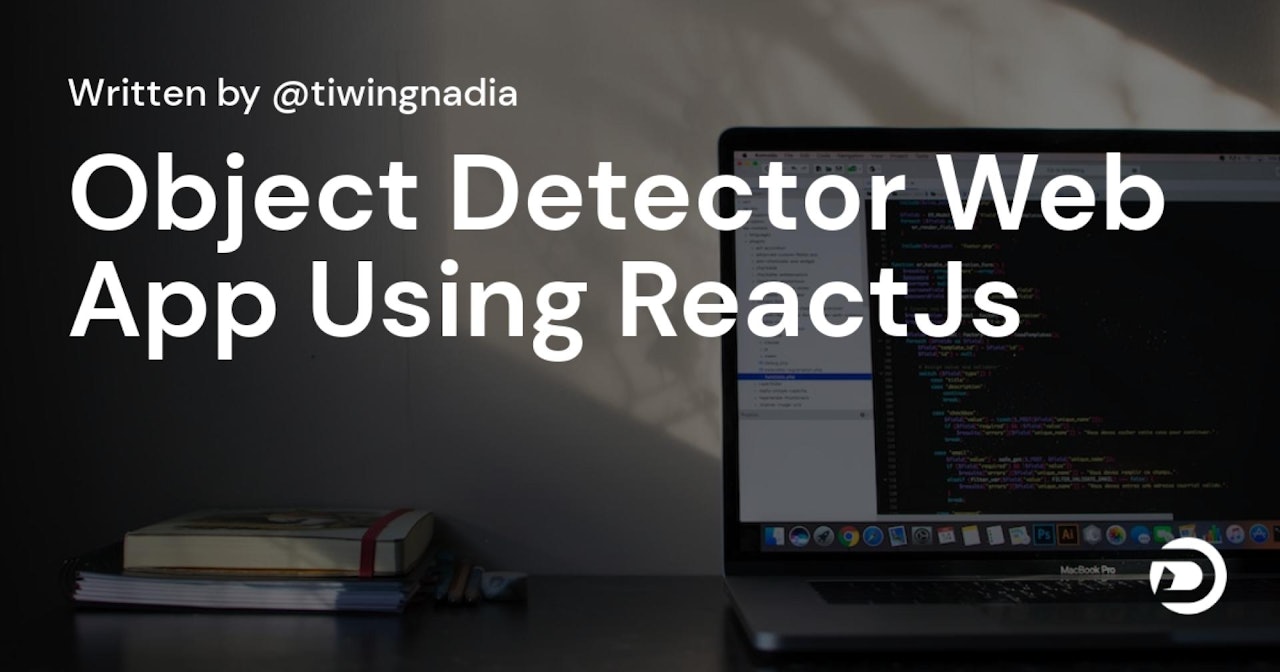 The function of this simple application is to indicate the object’s location in the image whenever the user clicks any of the labeled buttons.
The function of this simple application is to indicate the object’s location in the image whenever the user clicks any of the labeled buttons.
To begin with, I installed Boostrap 5 then created a simple design layout.
function ImageDetector() {
return (
<div className="App">
<div className="row container">
<p className="text-center">
<strong>Simple Image Labeling</strong>
</p>
<div className="row mt-2 mb-3">
<div className="col-4">
{/* buttons here*/}
</div>
<div className="col-8">
<img
id="image"
src="/img/foods.jpg"
alt="food"
className="w-100"
/>
</div>
</div>
</div>
</div>
);
}
export default ImageDetector;
I made an array of objects as my sample data.
const objects = [
{
object: "juice",
x: 1,
y: 1,
w: 230,
h: 250,
},
{
object: "oranges",
x: 200,
y: 230,
w: 320,
h: 230,
},
{
object: "bread",
x: 600,
y: 280,
w: 250,
h: 250,
},
];
Then I fetched the values from my sample data and put them in the buttons.
<div className="col-4">
{objects.map((item) => (
<button
className="btn btn-secondary col-12 my-2"
key={item.object}
>
{item.object}
</button>
))}
</div>
To display the square or rectangle shape indicator, I set the width and height variables to get the natural width and height of the image.
const [width, setWidth] = useState(0);
const [height, setHeight] = useState(0);
const image = document.querySelector("#image");
useEffect(() => {
if (image) {
let linkSrc = image.src;
const imageCopy = document.createElement("img");
imageCopy.src = linkSrc;
setWidth(imageCopy.width);
setHeight(imageCopy.height);
}
}, [width, height, image]);
I made a div element to put inside the img and svg elements so that the svg element would appear on the image. And I set the preserveAspectRatio to retain the x and y positions of rect and text elements when the screen size changes.
<div className="col-8">
<div className="img-container">
<img
id="image"
src="/img/foods.jpg"
alt="food"
className="w-100"
/>
<svg
preserveAspectRatio="none"
className="image-map"
viewBox={`0 0 ${width} ${height}`}
>
<rect className="selected-object"></rect>
<rect className="wrap-text"></rect>
<text className="object-name" x={xPosition} y={yPosition + 15}>
{selectedItem}
</text>
</svg>
</div>
</div>
css:
.img-container {
position: relative;
}
.image-map {
position: absolute;
top: 0;
left: 0;
width: 100%;
height: 100%;
-webkit-user-select: none;
-moz-user-select: none;
-ms-user-select: none;
-o-user-select: none;
user-select: none;
}
.selected-object {
position: absolute;
top: 0;
left: 0;
fill: transparent;
stroke: #ff9e0d;
stroke-width: 5px;
}
.wrap-text {
fill: #ff9e0d;
}
.object-name {
z-index: 999;
}
I started declaring the x,y,w,h variables and call these in svg’s rect and text elements.
const [xPosition, setXPosition] = useState(0);
const [yPosition, setYPosition] = useState(0);
const [objWidth, setObjWidth] = useState(0);
const [objHeight, setObjHeight] = useState(0);
const [selectedItem, setSelectedItem] = useState("");
<svg
preserveAspectRatio="none"
className="image-map"
viewBox={`0 0 ${width} ${height}`}
>
<rect
className="selected-object"
x={xPosition}
y={yPosition}
width={objWidth}
height={objHeight}
></rect>
<rect
className="wrap-text"
x={xPosition}
y={yPosition}
width={objWidth}
height="20"
></rect>
<text className="object-name" x={xPosition} y={yPosition + 15}>
{selectedItem}
</text>
</svg>
Then, I made a handleClick() to show the svg indicators on the image.
 View Website
View Website
 View Website
View Website
 View Website
View Website
const handleClick = (object) => {
objects.map((item) => {
if (item.object === object) {
setXPosition(item.x);
setYPosition(item.y);
setObjWidth(item.w);
setObjHeight(item.h);
setSelectedItem(object.toUpperCase());
}
return item;
});
};
Called the function in this button:
<button
className="btn btn-secondary col-12 my-2"
key={item.object}
onClick={() => handleClick(item.object)}
>
{item.object}
</button>
And it’s done. You can run your simple app.


Comments (0)